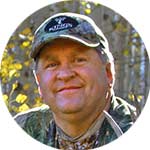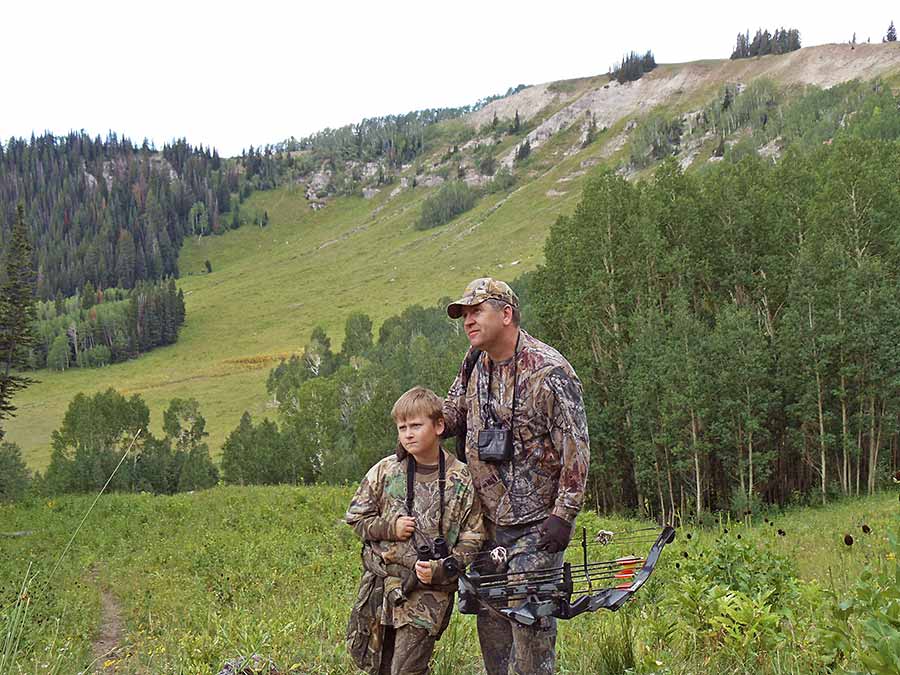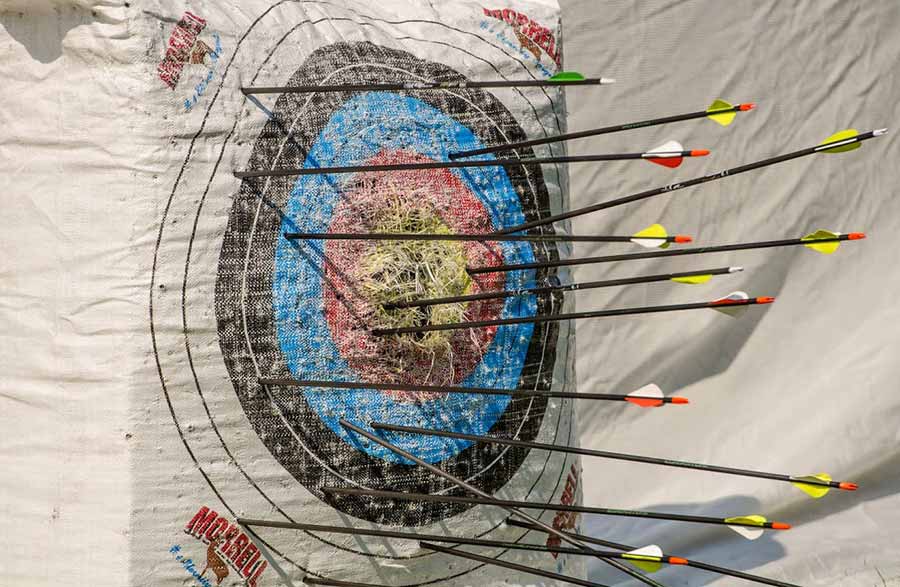Big game archery hunting: worth a shot
This year, grab a bow and learn the ropes
By Scott Root
DWR Central Region outreach manager
I remember during summer break in high school, my friends excitedly talking about the upcoming archery deer hunt. They made it sound like a special event and it piqued my interest. They were kind enough to invite me along on their hunt, help me learn how to shoot a bow and teach me the many facets of archery.
Previously, my father had taken my brother and me on some rifle deer hunts, so I already knew about "buck fever" and the excitement associated with hunting. My father never harvested a deer with me, but he still introduced me to something that influenced my life. He led me to the outdoors and to Utah's amazing wildlife. He taught me that harvesting game animals is okay when done for the right reasons, and that hunting helped fund wildlife management for big game and benefited many other species, too. He shared safety tips and fun hunting stories that motivated me to hunt. He also made sure we always had fun treats during our outdoor adventures — so I was happy no matter the outcome.
I'm in my 50s now, and still love the hunting experience. I also suffer from an occasional bout of buck fever. I honor my father's efforts by taking my son hunting in an attempt to keep the tradition alive. I will invite my nine-year-old daughter to participate as well (still working on her desire to hunt).
I find enjoyment in archery hunting. I love dressing in camouflage and blending in with the surroundings of the forest, watching birds fly by and other wildlife walk past. I enjoy the heart-pounding moment when you see a deer or elk and hope to make a successful shot on the animal. I look forward to hunting with friends and family and sharing our daily hunting experiences around the nightly campfire. I proudly find satisfaction in sharing my sweet and smoky jerky throughout the year, made from deer or elk venison I harvested the previous year. The list of memories and enjoyable benefits of archery hunting goes on and on!
Ironically, my favorite hunt is one of the only Utah big game hunts with unlimited tags that can be purchased right over the counter (archery elk). A big attraction with archery elk hunting is that you can shoot a bull or a cow elk. The state is split up into "any bull" and "spike only" archery elk units, so if you plan to hunt, be sure to know the boundaries of each of these units found throughout different parts of the state. Both allow you to harvest a bull or a cow. Obviously, you can only harvest a spike bull or cow elk in the "spike-bull only" units. A big bonus to archery elk hunting is that you can hunt in a spike-only unit one day, and then move to an any bull elk unit the next day — you just need to make sure that you harvest the proper size of bull elk. See maps of these units online.
Utah also offers extended archery areas that archers can hunt for a very lengthy period of time in the fall and winter. Archers must take an online archery ethics course for these units. These units also allow for some either-sex deer hunting as well. Learn more about extended archery hunting online.
You must apply for one of Utah's 30 general season archery deer units in February of each year. If you're unsuccessful at drawing one of these big game tags, consider trying archery elk hunting. The Dedicated Hunter Program is a popular program that allows hunters to harvest two deer in a three-year period. Hunters apply for this program in February. Dedicated hunters can hunt all three deer hunts each year (archery, muzzle loader and any weapon) which allows for a lot of hunting experiences and satisfaction in knowing you can pass up a few bucks until you choose to harvest the one you want. Dedicated hunters must also complete a short online conservation course and complete 32 hours of service work (that benefits wildlife) over that three-year period. Visit the Dedicated Hunter web pages to learn more about the program.
How to avoid problems during your archery hunt
1. Practice shooting your bow and know your archery equipment. I never shoot at an animal that is beyond my accuracy range. For me, that is 50 yards. Other hunters may have better equipment and can shoot accurately from farther away. It is essential to shoot often to increase your accuracy because no hunter wants to injure an animal. The goal is to make a quick, clean kill. Get to know your local archery shop and their staff. They are happy to help, even if you'll be shooting a bow and arrow for the first time. And don't be shy about asking experienced hunters questions as well. It's important to learn about archery equipment and hunting.
There's a lot of jargon associated with the sport of archery, as well as equipment and procedures that the average person may not be familiar with. Get online or go to an expert to learn more about archery equipment. A good example is a range finder. Most archers have a range finder. They generally cost between $100 and $200. Like a golfer guessing the distance to the pin, I find myself often guessing the distance of trees and other objects and then using my range finder to determine my accuracy. A range finder allows hunters to know the exact distance to a target. Make it a habit while sitting in the trees and waiting for game to guess distances of the different trees around you before a deer or elk walks into view.
There have been times that I was frozen during a stare-down with a deer or elk and couldn't pull up my range finder. I already knew the distance because I had ranged the tree right beside the animal. By the way, a range finder is one of the items I've forgotten to bring on hunts. I now keep my range finder and my archery release (the other item archers often forget) with my bow at all times. I highly recommend taking a bow hunter education course if you're serious about archery.
2. Scout before the season begins. One of the best things about Utah is that about 70 percent of it is public land. It's not difficult to get away from other hunters during archery season. I like to do research, look at maps and hike the mountains within my hunting unit before the season. I also use trail cameras and a block of salt (which are both legal to use). Big game animals need and crave salt during the spring and summer months. I remove my trail cameras in mid-August to minimize the chance of another person stumbling upon the camera and stealing it. A trail camera gives me good knowledge of the animals using the area and what time of day they visit.
via GIPHY
Some of Scott's recent Utah trail cam footage.
3. Know what to do once you have harvested a deer or elk. If you don't have a friend or mentor that can guide you through the processing of big game, YouTube is a great resource for learning. The big obstacle for archers is heat. Once you've shot a deer or elk, it's best to wait at least 30 minutes before searching for the animal. After that, it is crucial that you get it processed and cooled immediately. I keep a roll of fluorescent flagging tape to mark the blood trail. Marking the blood trail is an important part of tracking the animal because it becomes much more difficult to follow the blood trail the next day, or after a rainstorm. Don't forget to clean up the tape after you've recovered the animal.
Many archers choose to "bone out" their animal, which means they section it into different cuts of meat. I don't cut up my elk or deer as well as a game processor. I cut the meat into roast-size cuts that will fit into Ziploc or fabric bags. I try not to waste meat if possible — even scraps can be used for burger or sausage. Once the meat is packed into bags, it's important to pack out the animal and place into coolers as quickly as possible. If you do bone out a big game animal, remember that your tag must be attached to the largest portion of meat, as well as evidence of the animal's sex.
4. Be safe and have fun! If possible, hunt with a partner, use caution when handling broadhead arrow points, keep a clean camp, take a first aid kit and perhaps have a can of bear spray and don't forget medications. Make a checklist before the hunt. Write down your hunting plan and intended hunting locations and give this information to those at home. If you're using a tree stand, practice tree stand safety (find tips online). Don't forget to stay hydrated. Good luck!

















